Banknotes have complex designs which are intended to make them harder to counterfeit. Different parts of the design are made by using different printing processes. Our collection includes examples of printing plates, and the dies (moulds) used to make them.
1855
Plate die
Between 1855 and 1956 a small decorative design, or vignette, of Britannia appeared on the top left corner of all banknotes.
Artist Daniel Maclise (1806–1870) was paid £100 for the design. He included a beehive, to symbolise industriousness and cooperation. This die was used to make printing plates.
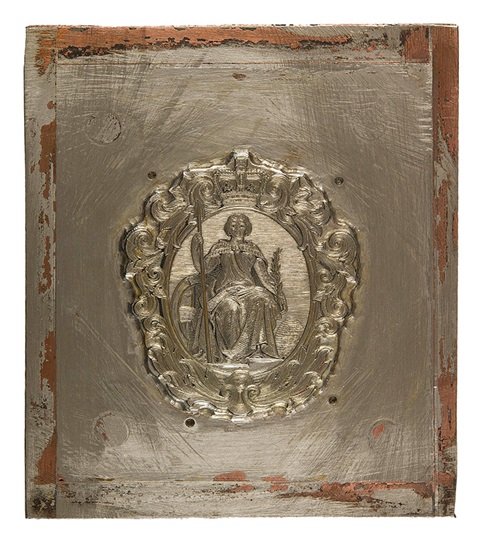
c. 1900
Plate die
Every Bank of England note includes the promise to pay the bearer the value of that banknote.
We no longer exchange banknotes for gold, but old notes can always be exchanged for current notes of the same value. This die was used to make multiple intaglio plates reading ‘I promise to pay’.
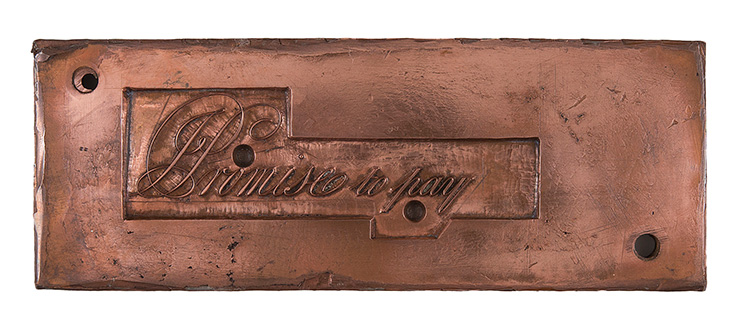
c. 1900
Printing plate
The sum block, found on the bottom left hand corner of a note, is an elaborate rendering of the banknote’s denomination, or value, in white letters on a black background.
Sum blocks were introduced in 1743 to make it difficult to alter the value of a note. This intaglio plate was used to print the sum block of a £5 banknote.
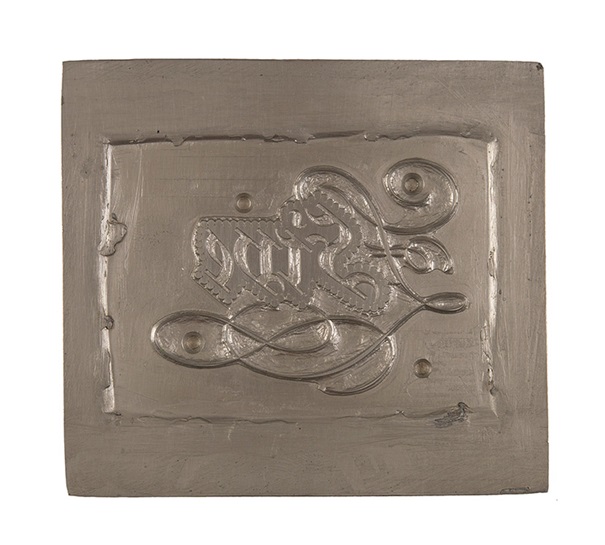
1908
Printing plate
Not all of our banknotes are for public use. The plate inside this custom-made wooden box was used to print £50,000 banknotes.
These notes, known as ‘Giants’, were used for accounting within the Bank of England. The plate is made up of different parts, which fit together to print the notes.
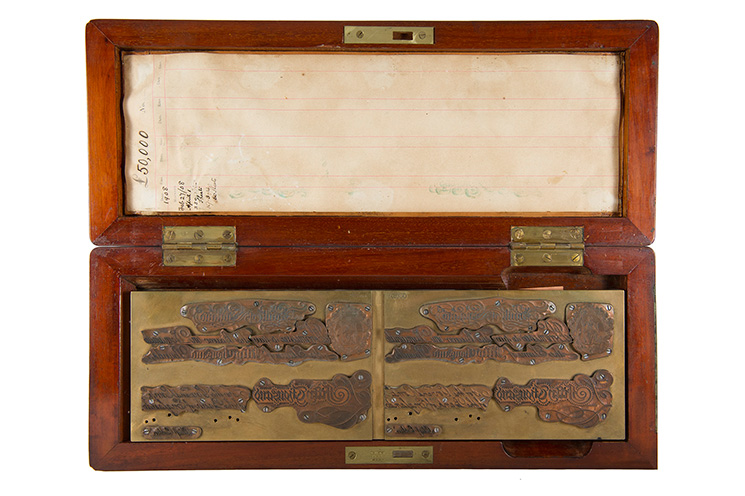
c. 1990
Foil die
Foil patches make banknotes hard to reproduce with colour-copying machines.
This die was used to stamp a foil patch onto the £50 banknote featuring Sir John Houblon (1632–1712), the Bank of England’s first Governor. This note was introduced in 1994 to mark its 300th anniversary and was the first to include a foil patch.
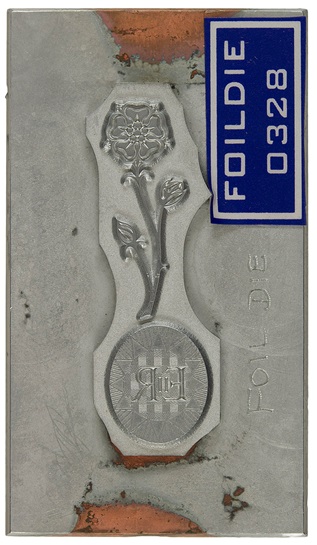
c. 1950
Printing plate
Microlettering is text that is too small to read without a magnifying glass. It is technically difficult to produce and makes notes harder to counterfeit.
This intaglio plate was used to test printing techniques for the curved micro-lettering of a 10 shilling banknote. It shows how the scale of the curved micro-lettering was slowly reduced.
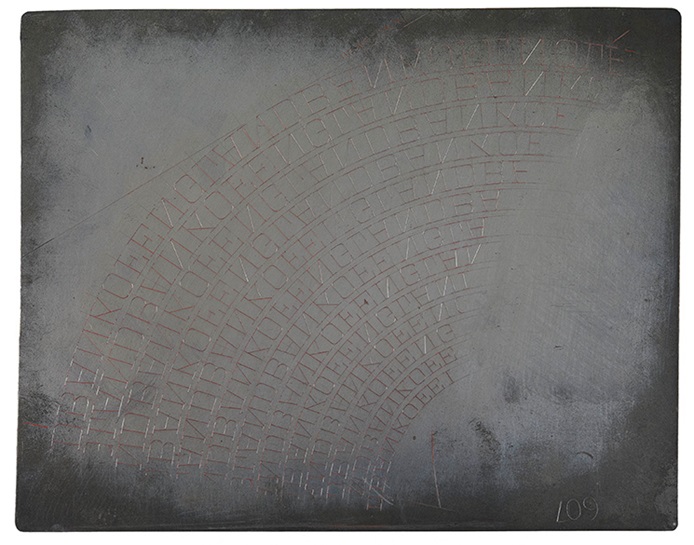
c. 1980
Numbering barrel
Letterpress printing is used to apply a unique serial number to each banknote.
The first four letters and numbers of a serial number are known as the ‘cypher’. This tells you the banknote’s position on the sheet it was printed on. The six numbers that follow the cypher show which sheet the note was printed on.
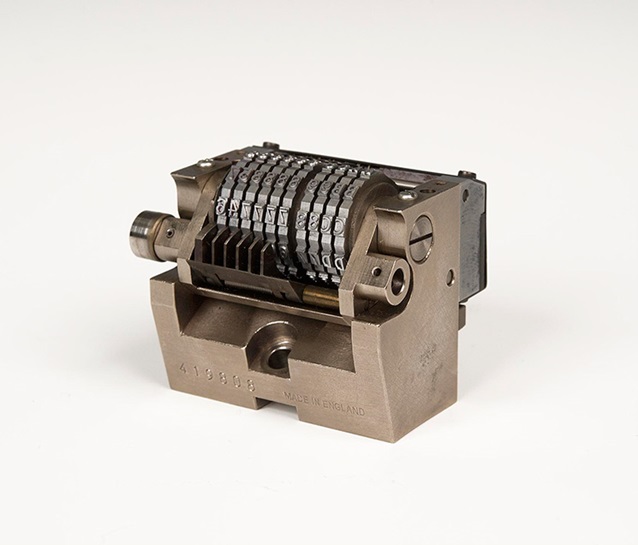
c. 1990
Watermark die
A watermark is a design made in paper that is only visible when held up to light. Watermarked paper is difficult to counterfeit.
This brass die was used to emboss watermarks of HM Queen Elizabeth II’s portrait on £20 and £50 notes. Her portrait has appeared as a watermark on £20 notes from 1970 and on £50 notes from 1981.

